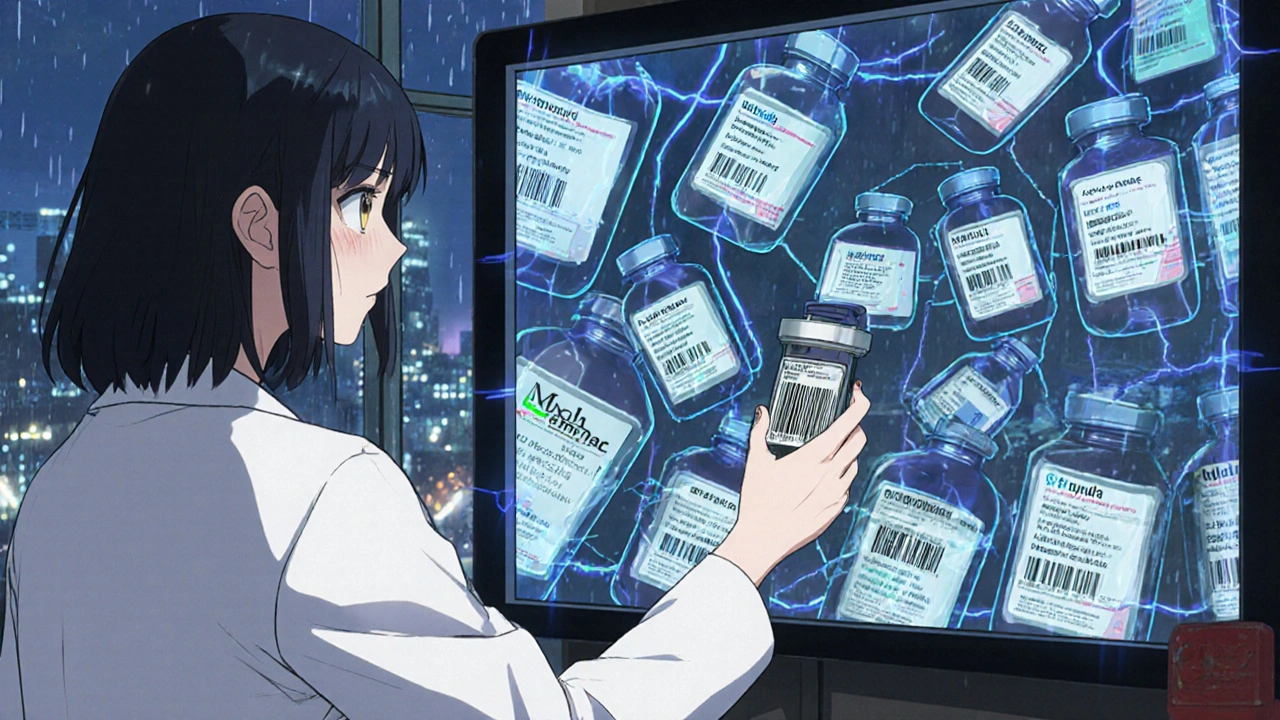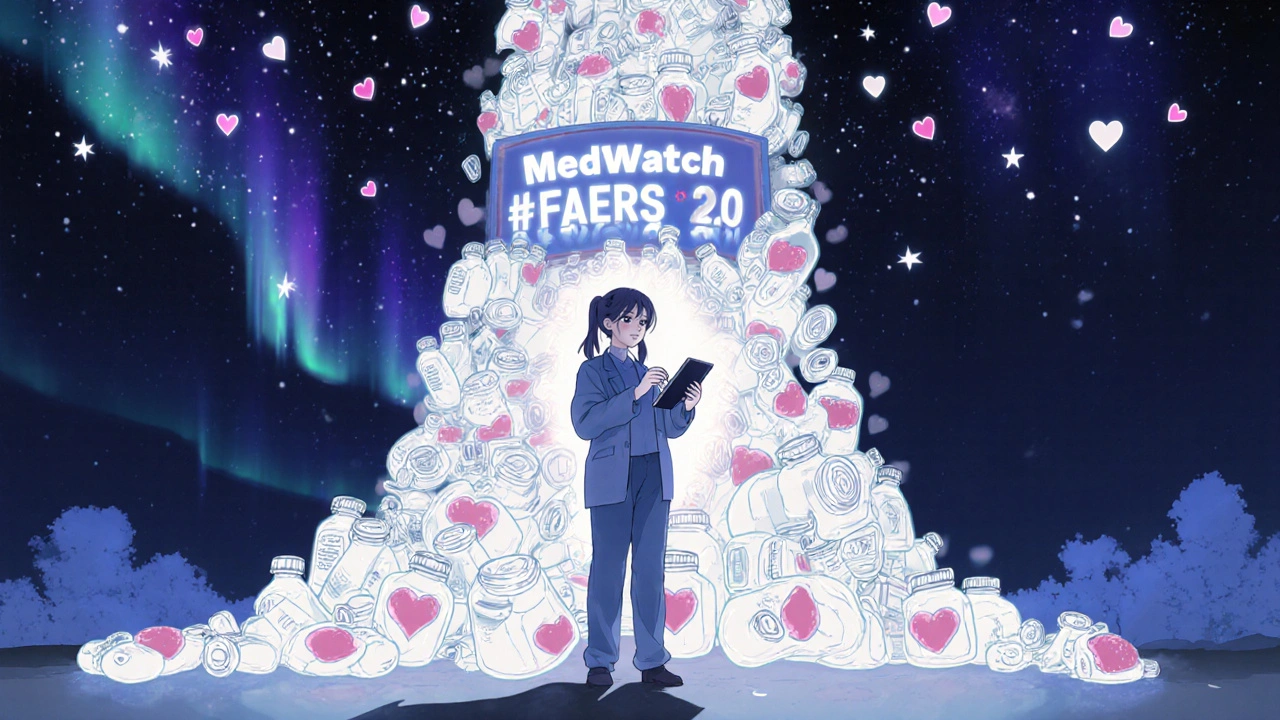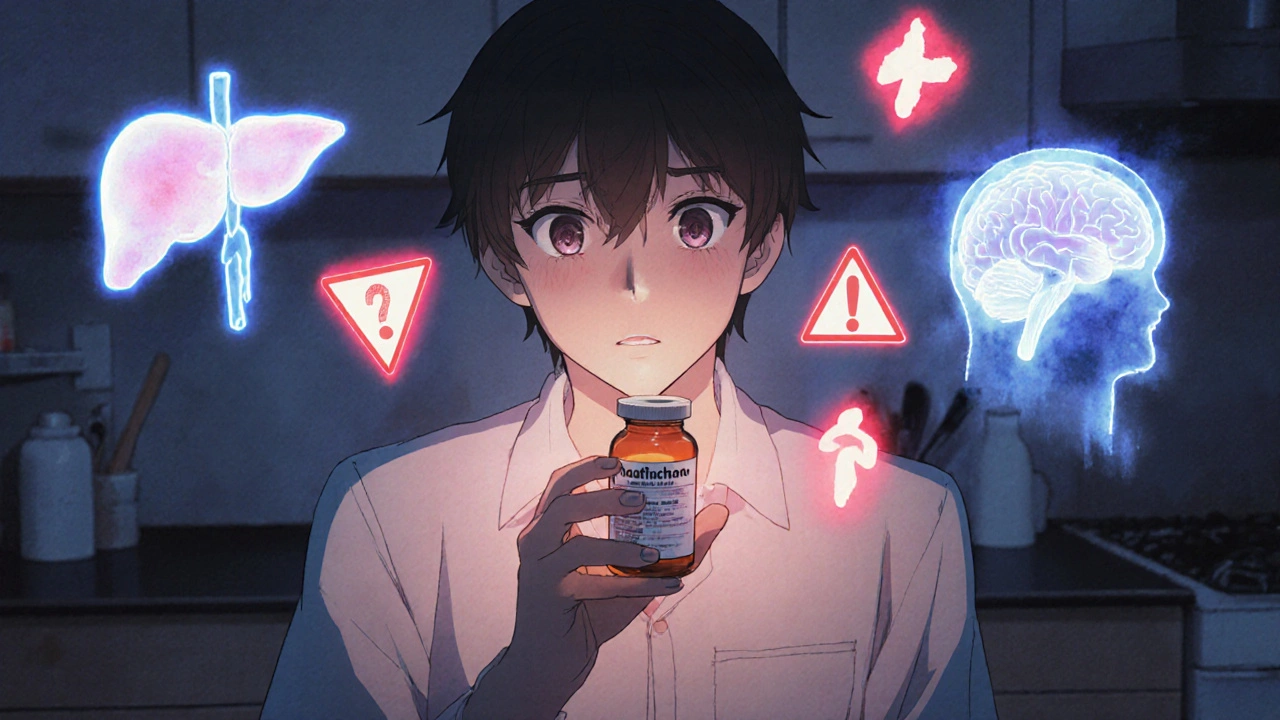When a patient has a serious reaction to a generic drug, who do you report it to? And more importantly-do you even know how?
The truth is, the system is broken. Even though generic drugs make up 90% of all prescriptions filled in the U.S., they account for far fewer serious adverse event reports than brand-name drugs. That’s not because generics are safer. It’s because reporting them is confusing, time-consuming, and often impossible without the right information.
What Counts as a Serious Adverse Event?
A serious adverse event (SAE) isn’t just a mild rash or a headache. It’s something that could kill, hospitalize, or permanently harm someone. The FDA defines it clearly: any reaction that’s fatal, life-threatening, causes hospitalization, leads to permanent disability, triggers birth defects, or requires medical intervention to avoid lasting damage.
That includes things like:
- Severe liver damage after taking a generic statin
- Uncontrolled seizures linked to a generic epilepsy medication
- Anaphylactic shock from a generic antibiotic
- Heart rhythm problems tied to a generic beta-blocker
It doesn’t matter if the drug is brand or generic. The rules are the same. But in practice, they’re not followed the same way.
Who Is Responsible for Reporting?
Everyone involved has a role:
- Healthcare providers (doctors, nurses, pharmacists) must report when they suspect a drug caused harm.
- Generic drug manufacturers must report serious, unexpected reactions to the FDA within 15 days of learning about them.
- Patients can report directly through the FDA’s MedWatch system.
But here’s the catch: generic manufacturers don’t always have the resources to monitor reactions like big pharma does. Only 42% of generic companies have dedicated safety teams, compared to 98% of brand-name makers. Smaller generic makers-those making just a few drugs-submit barely 5% of all generic SAE reports, even though they supply over a third of the market.
The Reporting Gap: Why Brand Drugs Get All the Attention
Between 2004 and 2015, brand-name drugs made up only about 1% of prescriptions for common medications like amlodipine and simvastatin. Yet they generated nearly 70% of all serious adverse event reports.
That doesn’t add up. If generics are taken 90% of the time, why are they reporting so little?
It’s not because patients don’t react. It’s because we can’t always tell which generic they took.
Pharmacies switch suppliers constantly. One week, a patient gets levothyroxine from Teva. The next, it’s Mylan. Then Amneal. The label might say “Levothyroxine Sodium,” but the manufacturer’s name? Tiny print. Often hidden on the bottom of the bottle.
A 2020 survey found that 68% of healthcare providers struggled to identify the generic manufacturer when filing a report. Only 12% had the same trouble with brand drugs.

How to Report a Serious Reaction to a Generic Drug
If you’re a provider or a patient and you suspect a generic drug caused harm, here’s how to report it correctly:
- Check the medication bottle. Look for the manufacturer name-it’s usually printed near the NDC number. If it’s too small to read, take a photo.
- Find the NDC code. It’s a 10- or 11-digit number on the label. Use the DailyMed database to match it to the manufacturer.
- Go to MedWatch. Visit the FDA’s MedWatch portal at fda.gov/medwatch and select “Report a Problem.”
- Fill out Form 3500. Under “Drug Name,” enter the generic active ingredient (e.g., “Metoprolol Succinate”). Under “Brand Name,” leave it blank. In the “Manufacturer” field, enter the exact name (e.g., “Teva Pharmaceuticals USA”).
- Describe the event. Include onset date, symptoms, treatment, outcome, and whether the reaction stopped after stopping the drug.
- Submit. You can file online, by mail, or by fax. Online is fastest.
Pro tip: If you’re a pharmacist or nurse, scan the medication barcode at dispensing. Hospitals that use barcode scanning saw a 63% increase in accurate generic reporting.
Why This Matters More Than You Think
When serious reactions go unreported, the FDA can’t spot patterns. That means dangerous side effects might go unnoticed for years.
Take levothyroxine. There are dozens of generic versions. Some patients report inconsistent absorption-leading to fatigue, weight gain, or heart palpitations. But without knowing which manufacturer’s product caused it, regulators can’t investigate.
The FDA admitted in 2018 that their system has “potential limitations” for generic drugs. The Government Accountability Office confirmed in 2021 that the agency lacks enough data to know if underreporting is happening. That’s not just a gap-it’s a blind spot.
And it’s getting worse. With over 200 generic manufacturers in the U.S., and many of them small or overseas-based, the risk of missed signals grows every year.

What’s Being Done to Fix It?
The FDA isn’t ignoring this. In 2023, they launched FAERS 2.0-a new system that links adverse events directly to NDC codes. That means even if a patient doesn’t know the manufacturer, the system can automatically track it.
They’ve also proposed new rules requiring pharmacies to print the manufacturer name clearly on all prescription labels. A pilot program with major chains like CVS and Walgreens is testing automated data capture at the point of dispensing. Early results show a potential 55% increase in complete reports within three years.
Meanwhile, the Generic Drug User Fee Amendments (GDUFA III), active from 2023 to 2027, are funding $15 million toward better safety monitoring for generics.
But change won’t come fast enough if we don’t report now.
What You Can Do Today
You don’t need to be a doctor to make a difference. Here’s how you can help:
- If you’re a patient: Keep your medication bottles until you finish the prescription. If you feel something’s wrong, report it. Use the MedWatch form. Even if you don’t know the manufacturer, report the generic name and describe the reaction.
- If you’re a provider: Make checking the manufacturer part of your routine. Don’t assume it’s “just a generic.” Record the NDC. Take a photo. Ask the patient. Your report could prevent a future tragedy.
- If you’re a pharmacist: Train your staff to verify manufacturer names at dispensing. Advocate for barcode scanning in your pharmacy.
Every report counts. Even if you think it’s “just one case.” One report can be the first clue in a pattern that saves thousands.
The system isn’t perfect. But it’s the only one we have. And it only works if we use it.
Do I need to know the exact manufacturer to report a serious reaction to a generic drug?
No, you don’t need to know the exact manufacturer to file a report. The FDA’s MedWatch system accepts reports using just the generic active ingredient name. But including the manufacturer name (e.g., Teva, Mylan, Amneal) makes the report far more useful. If you’re unsure, check the bottle or use the NDC code with DailyMed to look it up. Even partial information helps the FDA track patterns.
Are generic drugs less safe than brand-name drugs?
There’s no evidence that generic drugs are inherently less safe. They must meet the same FDA standards for quality, strength, and absorption as brand-name drugs. But differences in inactive ingredients (like fillers or coatings) can sometimes affect how a drug behaves in certain patients. The problem isn’t safety-it’s underreporting. Without complete data, we can’t detect rare or subtle safety signals tied to specific generic manufacturers.
How long do generic drug manufacturers have to report serious adverse events?
Generic manufacturers must report serious and unexpected adverse events to the FDA within 15 calendar days of becoming aware of them. For fatal or life-threatening reactions, the deadline is the same as for brand-name drugs. They must also keep all adverse event records for 10 years after receiving the report, as required by FDA regulations (21 CFR 310.305).
Can patients report adverse events from generic drugs themselves?
Yes, patients can and should report serious reactions directly to the FDA through MedWatch. You don’t need a doctor’s help. Visit fda.gov/medwatch, select “Report a Problem,” and fill out the form. Include the drug name, when you started it, what happened, and when it started. If you have the bottle, include the manufacturer name and NDC code. Your report adds critical real-world data that healthcare providers may miss.
Why do some healthcare providers avoid reporting generic drug reactions?
Many avoid reporting because they can’t identify the manufacturer. Pharmacies switch suppliers often, and the label information is often hard to read. A 2019 FDA study found 42% of providers abandoned reports for generics due to uncertainty about the manufacturer-compared to just 9% for brand drugs. Others say it’s too time-consuming. A typical report takes 15-30 minutes, but for generics, it can take 45+ minutes to track down the right details.
Next Steps: What to Do After Reporting
Once you submit a report, you won’t get a personal reply. The FDA doesn’t respond to individual reports. But your data goes into FAERS-a national database used by scientists and regulators to spot safety trends.
If enough reports point to the same generic drug and manufacturer, the FDA may:
- Issue a Drug Safety Communication
- Require label changes
- Ask the manufacturer to study the issue
- Initiate a product recall
That’s why your report matters. One report might not change anything. But 50? 100? That’s how safety signals are found.
Don’t wait for someone else to speak up. If you’ve seen a reaction, report it. Even if you think it’s small. Even if you’re not sure. The system only works when we all use it.

Allison Turner
November 27, 2025 AT 19:22Savakrit Singh
November 28, 2025 AT 22:20Cecily Bogsprocket
November 29, 2025 AT 03:47Miriam Lohrum
November 30, 2025 AT 00:47Gayle Jenkins
December 1, 2025 AT 13:12Kaleigh Scroger
December 2, 2025 AT 01:44Elizabeth Choi
December 3, 2025 AT 05:25sharicka holloway
December 3, 2025 AT 13:13Melania Rubio Moreno
December 4, 2025 AT 12:14